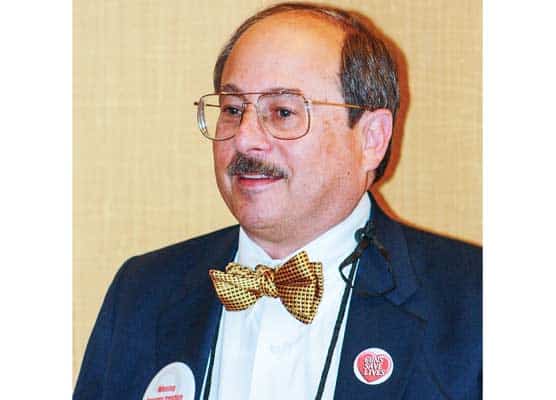Gifts
Just A Few
Over the years I’ve often heard the question asked, “What was the best Christmas gift you ever received?” Usually this is qualified by “Maybe not the most expensive, or the biggest surprise, but the most memorable; the one you’ll always remember as the best.” For me, the answer is easy. I’ve known exactly what it was since I was 19-years old. It was a pair of socks.
They weren’t just any socks. They were new, never worn, clean, dry military-issue boot socks, and they were perhaps the only such pair within 100 miles. They were a gift from my best friend and “roommate” in our 2-man fighting hole on Christmas Eve. He had bartered who-knows-what for them over a month before, and kept them secretly hidden away in a plastic bag.
It was hardly possible for us to hide anything from each other. We were closer than brothers, and lived out of each other’s rucksacks. I knew how difficult hiding things could be, because I had done the same with something he highly prized: a can of fruit cocktail, almost as rare as clean dry socks.
We decided to exchange gifts on Christmas Eve, because the odds were against us seeing another dawn. He opened the fruit cocktail and offered me a spoonful. Grinning, he announced he wasn’t going to die and leave an unopened can for someone else to enjoy. I put on the socks right away, reveling in their luxury, and he smiled like the proud poppa he would never get the chance to be. He was killed in action the following July. One lone surviving photo of him, smiling in the sun on a shell-cratered hilltop is a cherished memento. Does anyone wonder why that pair of socks has always been my “best Christmas gift”?
Giving IS Getting
I suspect a lot of you folks are like me; uncomfortable receiving gifts, but really tickled with giving appreciated gifts. One of the most rewarding things I’ve ever done is giving Christmas gifts the recipients named as their “best ever.” I’ll tell you about just one—and admit I have an ulterior motive.
Years ago I knew a kid in his early 20s who had never held a firearm, much less shot one—but he was interested in a girl who was an avid rifle shooter, and he wanted to learn gun handling. I taught him the basics—safety, nomenclature, shooting and maintenance, slipping in mini-lectures about the history of free, armed Americans and the rights and responsibilities of armed citizens. It was all new to him, but he hungrily devoured it.
I had him shooting a variety of rifles and carbines, but there was one he truly loved: a Swedish Mauser Model 96, in 6.5x55mm, made in 1916. Adding to the appeal of that long, exceptionally accurate rifle was the date on its receiver—to him, ancient history. I told him about the cataclysmic events of that momentous year, including the 11-month battle of Verdun. I told him to save his money, and I could find him one like it. Then I gave it to him for Christmas, with 400 rounds of ammo. He was stunned.
It made him a rifleman. I watched as he became an informed, confident, proud, armed citizen—a fully-realized American. Possession of a rifle, some skills, and a sense of history gave him identity; for the first time, a worthwhile self-image. The gift of that gun changed his life—and enriched mine.
I know lots of you have more old but serviceable shooters than you’ll ever have real need for again. You’re experienced hunters, trap and skeet shooters and competitive marksmen. You have both things and skills. Maybe this isn’t something you could do this Christmas, but perhaps a project you could fulfill over 2011, culminating in the same kind of Christmas surprise. There are worthy candidates out there waiting for a mentor. It would be good for you, for them, for the nation—and for me too. Sneaky of me, huh? Think about it, OK?
The Gift Of Trenton
This Christmas, if you can capture some grandkids or miscellaneous munchkins, I urge you to give them Trenton. It’s highly unlikely they’ll ever hear of it in school. Get a book or two with colorful illustrations; maybe make a crude map yourself. Kids need visual aids to capture their attention. Keep it brief or you’ll lose ’em. But tell it with humor and passion, and you might just change a world-view, and a life.
You remember the story: In November of 1776, the Continental Army numbered 30,000 men. After the disastrous battles for New York and New Jersey, only about 2,500 remained strong enough to fight. Washington’s army barely escaped across the freezing Delaware into Pennsylvania. They were so short of supplies that only 1/3 had shoes or boots; the rest wrapped their feet in rags and burlap.
The British-led Hessian troops decided to wait in Trenton until the river froze over, then march across and wipe out the ragged band of Americans. Washington’s men were hungry, exhausted and demoralized.
But on December 19, something extraordinary happened. Thomas Paine, the author of Common Sense, which inspired so many colonials to revolt against the English crown, published another pamphlet titled The American Crisis. It began with the once-famous words, “These are the times that try men’s souls.” Paine spoke of the “summer soldiers and sunshine patriots” who would fold when times got tough, but for the true patriots, “the harder the conflict, the more glorious the triumph.” Washington read it to his men. It wasn’t food or medicine, but it filled and invigorated them. They were ready to fight again.
In the teeth of a storm on Christmas night, against all odds, they crossed the ice-filled Delaware to Trenton, where they surprised and defeated the Hessians. More victories followed, and with them, freedom.
There are so many stories within the saga. A spy came to the Hessians’ headquarters to warn them of Washington’s attack. Why did their commander, Colonel Johan Rall, refuse to admit him—and shove the note in his pocket? Who was “Fat Henry Knox,” the 26-year-old bookworm, and why might the operation have failed without him? Emanuel Leutze’s 1851 painting “Washington Crossing the Delaware” contains several silly inaccuracies—what are they? Point ’em out, tell the true tale; breathe life into it.
The story is waiting, online and in libraries, almost forgotten. It needs telling; it needs giving on Christmas. If one kid in a thousand is inspired, will your efforts be rewarded? It could be your best Christmas gift ever. Merry Christmas, friends.
Connor OUT




